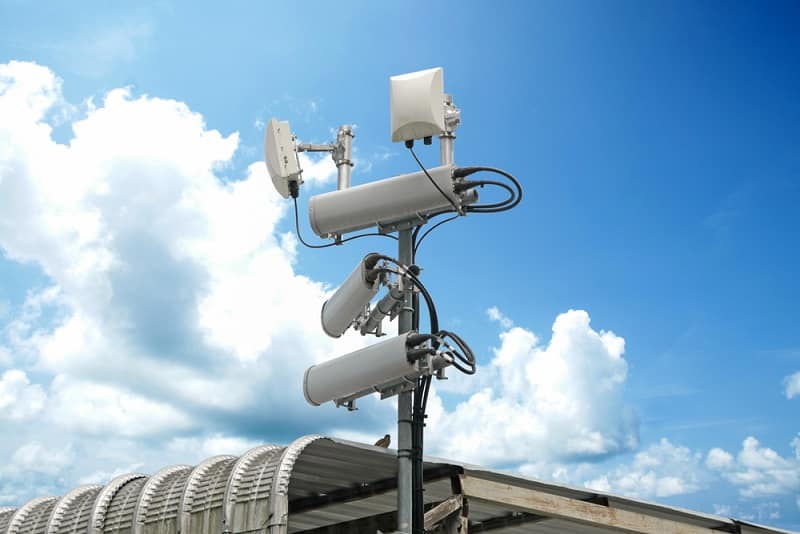
If you are looking to extend the range of your WiFi signal the key to getting a better signal from a distance is to invest in a high quality WiFi antenna. The problem is when you look at the number of WiFi antennas that are out on the market you can spend a great deal of time trying to figure out which one best fits your needs.
If you have an idea of the different antennas which are available it will help you to make a well informed decision as to which antenna will be the best choice for you. Here is an overview of a few of the different types of WiFi antennas to help make your decision a little easier.
Types of WiFi Antennas
1. Point-to-Point Antenna
This type of WiFi antenna is designed to extend a wireless signal from a single WiFi location to another single WiFi location. For example, if you want to extend the connection from one building to the next this is known as a point-to-point connection. The antenna simply delivers a signal from one point to another point. A point-to-point antenna is also referred to as a directional antenna.
2. Point to Multi-Point Antenna
A point to multi-point antenna provides a signal from a single location to multiple locations. This type of antenna is typically used for WiFi Local Area Networks or WLAN. For example, if you place the antenna in your home, other houses around yours can potentially share the WiFi connection. The single point is your house and the multiple points are the houses that neighbor yours. A point to multi-point antenna is commonly referred to as an omni-directional antenna.
3. Mobile Antenna
A mobile WiFi antenna can be used in your vehicle to access high speed Internet connectivity. The advantage of using this type of antenna is the capability to pick up wireless signals from public access points such as when you are traveling. It is important to mention that a mobile antenna should not be used to pick up signals from private homes but it is a handy tool to use while you are on the go.
4. Office Antenna
Office antennas are used to extend the range of a WiFi signal to your office router. Instead of having to run multiple wires you can simply install an office antenna in addition to the other components that are required for connectivity. This may be tricky if you are trying to extend the range between building floors however, using an office antenna is effective when used on a single floor.
5. Home Antenna
A home antenna is an easy base model antenna that allows you to extend the range of your WiFi signal throughout your home. Depending upon how your home is setup you may need to install more than one antenna to increase the range between walls or between floors. The antenna(s) should be installed on each remote computer as opposed to installing it on your router to get the most out of your WiFi signal.
6. Dish Antenna
A dish antenna is also known as a parabolic antenna and provides the strongest signal since the unit is highly focused and sends your WiFi signal over an exceptionally long distance. The trick to getting a great signal is to accurately point the dish since the signal will increase while the pattern for radiation is reduced. This concept leaves very little room for properly pointing the dish so you receive the best signal.
7. Yagi Antenna
This type of antenna provides exceptional signal strength especially when it is used in an outdoor environment. Originally designed as a radio antenna it is now widely used for 802.11 wireless connections. The unusual name originates from its inventor Hidetsugu Yagi and the antenna is typically used point-to-point or to extend the WiFi signal for a point to multi-point connection.
What about the range?
There are many factors that come into play when you are talking about extending the range and getting the most out of your WiFi signal. These are factors such as objects or devices that may be obstructing the signal, the type of wireless card or router that you use, the ability of the wireless card to receive the signal, and many other factors.
One of the main rules of thumb to remember when choosing a WiFi antenna is to get one that you feel may deliver more than you need. Many WiFi antenna manufacturers will exaggerate their claims regarding the range of the signal and because of this and other factors that affect the range of the signal; it is okay to choose an antenna that you think may be over the top or more than you need.
What about interference at long range?
Interference is always an issue that must be dealt with when you are extending the range of your WiFi signal. First, it is important to keep other wireless devices out of range for your WiFi signal as well as your microwave oven, lighting systems, wires, and electronic devices. Depending upon the antenna you choose other objects such as walls, floors, trees, and other objects will cause interference because they obstruct the signal.
Hopefully, this overview of WiFi antennas will help to provide you with a place to start and help you save time when you view the many antennas that are currently out on the market.
Can these antennas be used by those looing for free internet connection through open network or hot spot